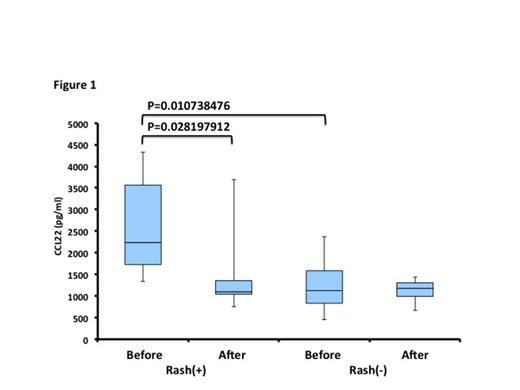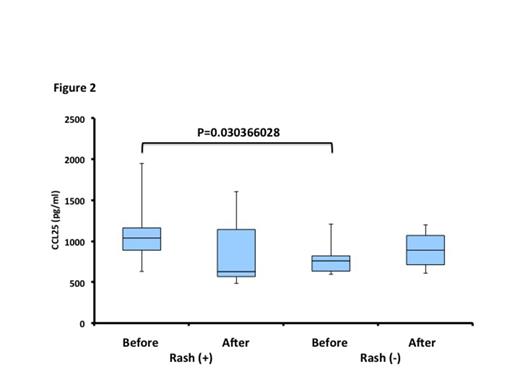Abstract
Introduction: Bendamustine has been recently approved for the treatment of low-grade malignant lymphoma. In spite of the better efficacy, skin rash is the commonest adverse event by bendamustine in the treatment of malignant lymphoma. To understand the mechanism of the skin rash, we prospectively examine the relationship between skin rash and chemokines. Methods: After informed consent to the patients, who would received bendamustine (B) or bendmustine+rituximab (BR), the sera were collected before and after the treatment of B or BR. Cytokine/Chemokine array was performed by Bio-Plex system. Results: 20 patients with FL (n=18), MCL (n=1), and low-grade B-cell lymphoma (n=1) were enrolled in this study. All patients wee treated with B or BR regimen. 9 patients showed skin rash after the treatment of bendamustine. In Cytokine/Chemokine array, serum levels of CCL22 and CCL25 before the treatment were significantly higher in skin rash group (p=0.010738476 and p=0.030366028, respectively) (Figure 1 and 2), and serum levels of CXCL10 and CXCL11 after skin rash were higher significantly (p=0.000923527 and p=0.014890795, respectively). Conclusion: Serum levels of CCL22 and CCL25 might predict skin rash inductionAthe commonest adverse event by bendamustine and CXCL10 and CXCL11might contribute to induction of skin rash by bendamustine.
No relevant conflicts of interest to declare.
Author notes
Asterisk with author names denotes non-ASH members.



This feature is available to Subscribers Only
Sign In or Create an Account Close Modal